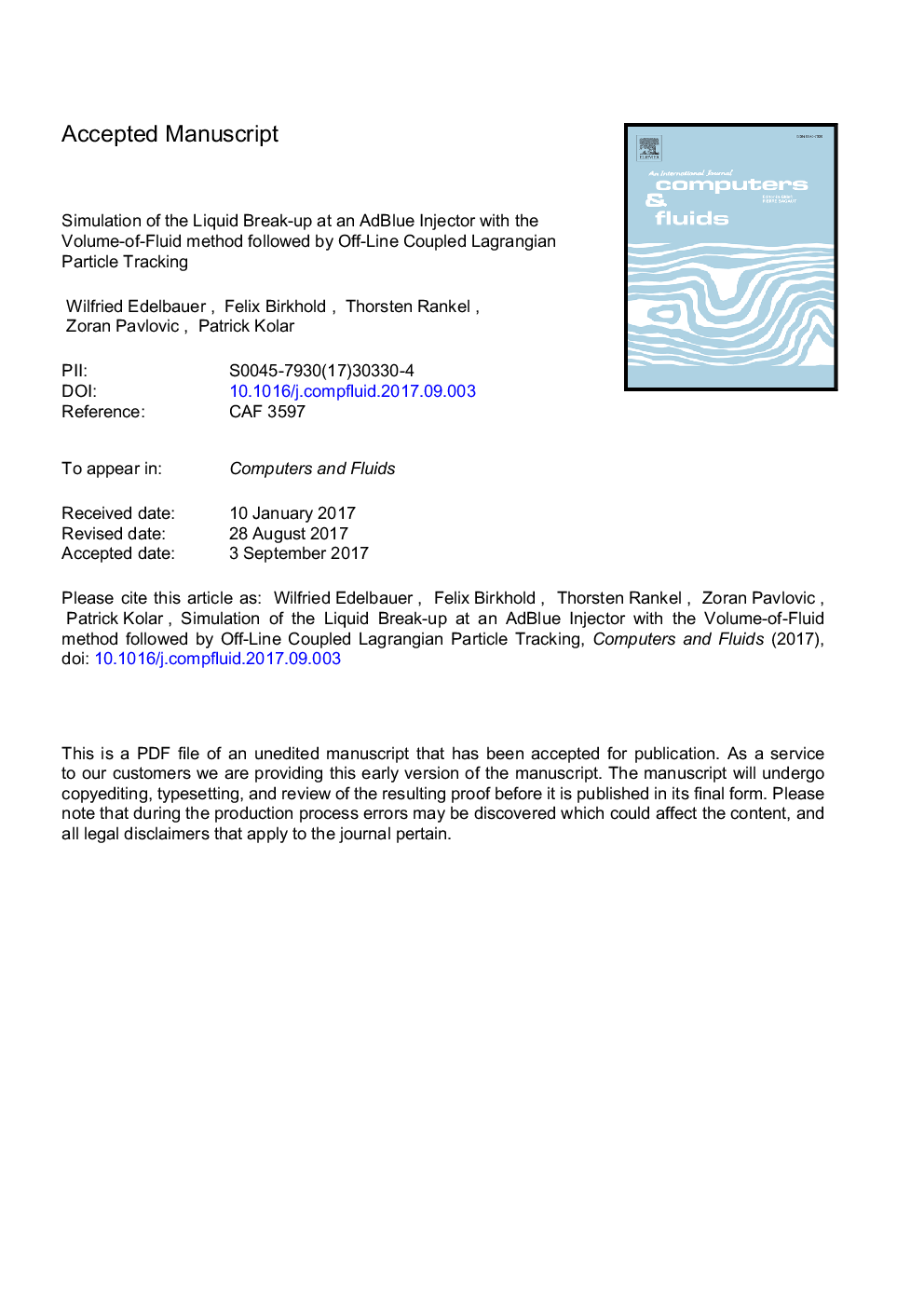| Article ID | Journal | Published Year | Pages | File Type |
|---|---|---|---|---|
| 5011696 | Computers & Fluids | 2017 | 50 Pages |
Abstract
Numerical simulation of the liquid break-up and prediction of the droplet size distribution of injection devices is a challenging task. For predicting the disintegration process, interface capturing techniques, e.g. the volume-of-fluid method, are mandatory. The extensive computational effort caused by the high resolution requirements in space and time determine the limitation for many applications. Validations of such simulations with experimental data can be only rarely found in the literature. This study presents a comprehensive numerical and experimental investigation of the break-up process at an industrial low-pressure three-hole injector. The numerical simulations for three different injection pressures are performed with an efficient volume-of-fluid approach. At certain time instants the volume fraction field is scanned for coherent liquid structures, and the ligament size distribution is evaluated. The simulated mean droplet diameters and the droplet size distribution functions show a good agreement with the performed measurements. The high computational effort, caused by the fine mesh resolution, limits the axial extension of the simulated domain, here fifty times the nozzle diameter. In order to extend the simulated spray domain, an off-line coupling approach with a Lagrangian particle method is proposed. Therefore, the detached droplets from the volume-of-fluid simulation are used as initial conditions for the subsequent Lagrangian spray simulation on a coarser computational grid. This presented second step determines the link between liquid disintegration on a micro-scale, and spray simulation on a macro-scale. The aim of this study was to develop a predictive simulation tool for determination of the injector characteristics.
Keywords
Related Topics
Physical Sciences and Engineering
Engineering
Computational Mechanics
Authors
Wilfried Edelbauer, Felix Birkhold, Thorsten Rankel, Zoran PavloviÄ, Patrick Kolar,
